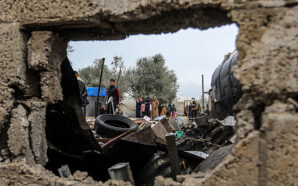Week 5 of Lent: Reflection No. 6 – Accompanying our patients along the Road to Emmaus – the pastoral journey with our patients
Continuity of care is one of the key attributes of professional clinical care of patients. In this respect, continuity of care can be viewed through the lens of a journey – where the clinician and patient at their first meeting are strangers to one other, and they grow into the clinical relationship over time. Continuity of care can be distinguished from recurrent episodic care, where care becomes episodic, without any development of the clinician-patient relationship.
We will reflect on continuity of care using the lens of the journey on the road to Emmaus (Luke 24:13-35) as we head into Holy Week.
On this journey, the risen Christ joins the disciples as strangers on the road. He walks beside them, adjusting his pace to walk alongside them on the journey. He joins them as equals, asking them, ‘what are these things you are discussing as you walk along?” He enters into a conversation, listening empathically, and respecting their experience of grief, bewilderment and confusion. As the disciples shared how their world had been turned upside down with the death of Jesus, the stranger begins to explain scripture to them, helping them to understand the meaning of their experience. As he explained scripture to the disciples, the hearts of the disciples started to burn within them.
At the end of the day, the disciples invited Jesus to stay with them. They could have let the stranger go on his own way into the night. Yet, in inviting the stranger to stay with them, they were to have a surprise encounter at the breaking of bread. Their terror, confusion, and grief would be healed as they recognised him at the breaking of bread – and they would return joyfully to Jerusalem to share the Good News, since they now knew that they would continue to recognise and meet Jesus at each subsequent breaking of bread in the community.
What has this got to do with patient care, and continuity of care in particular?
The clinician meets the patient at the first consultation as strangers to one another (unless the patient was known beforehand – for example, if they both belonged to the same church in a country town).
In taking a history, the clinician initiates a conversation that is more than just taking a clinical history. It also involves listening to the fears, anxieties, hopes, and experience of the patient, which is the setting for the symptoms that are discussed and explored. This setting contributes to the clinical picture that guides the clinician in approaching the clinical conversation, and formulating a response, not just in terms of a diagnosis, but also in terms of care.
The clinical conversation leads somewhere. At the level of evidence-based practice, the conversation leads to symptom analysis, diagnosis and management of clinical conditions according to the best available evidence for clinical care. At another level, the conversation leads to pastoral outcomes, as the clinician-patient relationship develops as a relationship of compassion and empathy – in which the patient feels understood, coming to develop the trust and respect that is vital to developing an open and ongoing relationship with the clinician.
At the same time, the clinician, through an open, respectful and compassionate stance towards the patient, facilitates the development of the patient-clinician relationship as a relationship of care that allows the compassion of Jesus to minister to the patient.
(N.B. Note that the word, ‘patient’ has its root in the lat. ‘pain’ or ‘suffering’ – so a patient is someone who is in pain or suffering and calls forth from the clinician a response of Gospel compassion.)
As we journey into Holy Week, let us all pray for Jesus to continue to accompany us as we continue our mission as Catholic health care professionals, called to minister Gospel healing, peace and hope for our patients.
Dr Michael Tan is a retired GP in formation for the Permanent Diaconate in the Diocese of Parramatta. He has just been appointed to the Executive of the Catholic Medical Association in NSW








